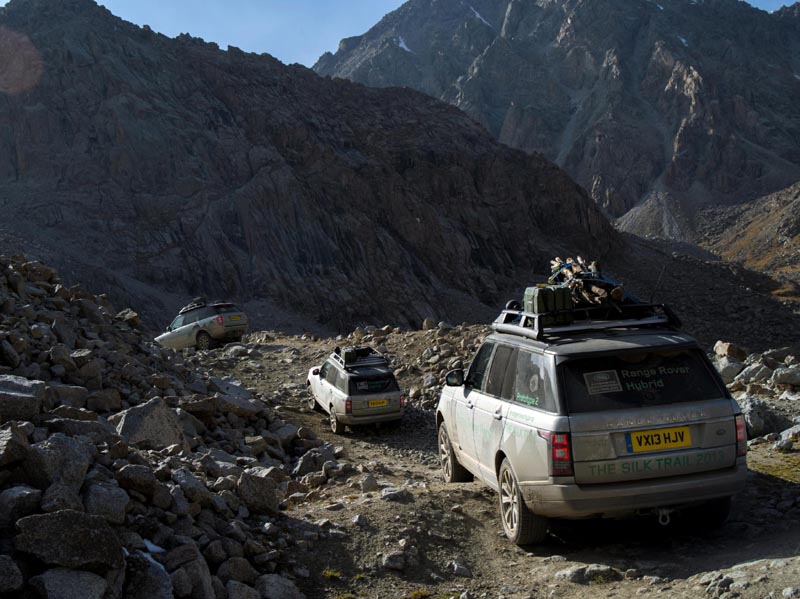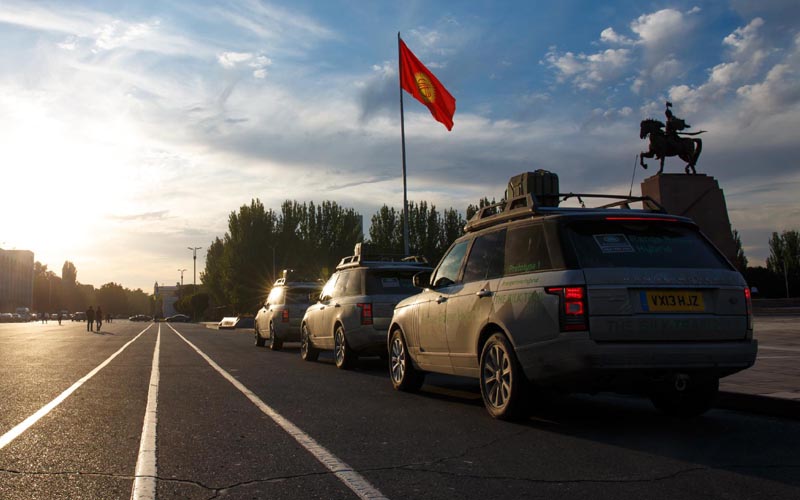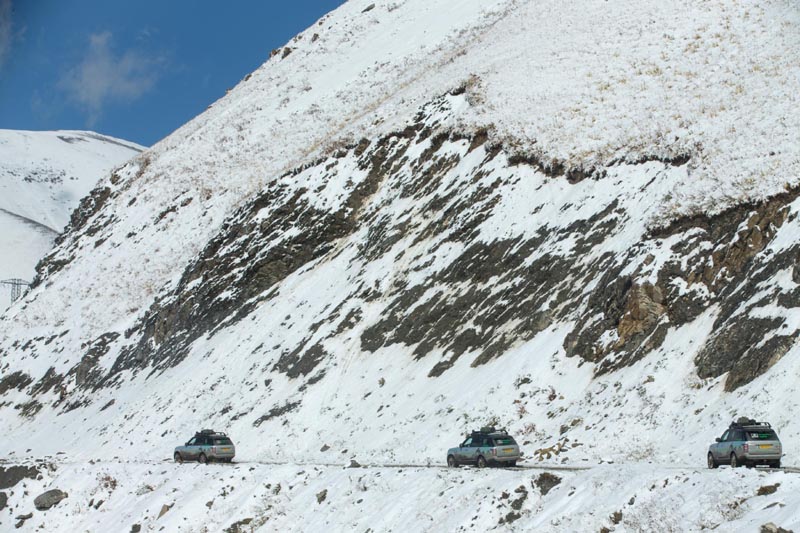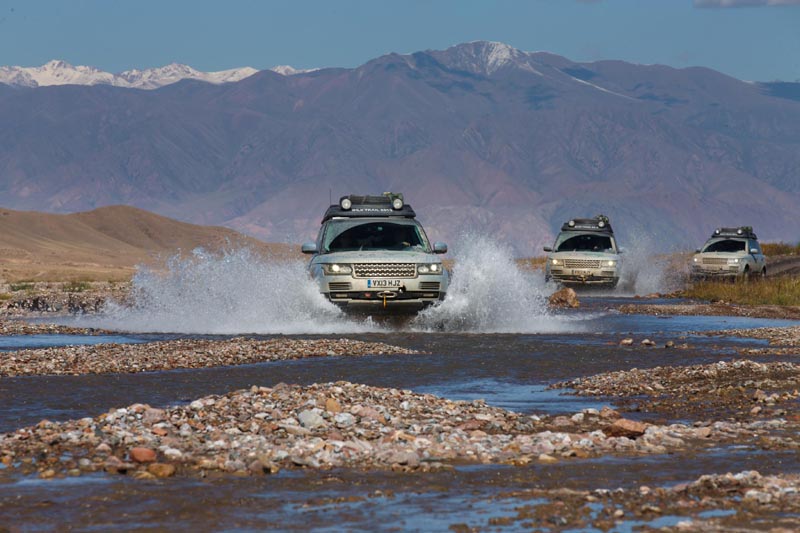THREE RANGE ROVER HYBRID PROTOTYPES CLIMB HIGH INTO THE KYRGYZSTAN MOUNTAINS ON THE ANCIENT SILK TRAIL ROUTE TO MUMBAI

Three Range Rover Hybrid Prototypes Climb High Into The Kyrgyzstan Mountains Whilst On The Ancient Silk Trail Route To Mumbai
Weekly highlights from Land Rover’s Silk Trail 2013 expedition, travelling 10,600 miles from Solihull, UK, to Mumbai, India and taking-in the legendary Silk Road trading route that first connected Asia with Europe more than 2,000 years ago. This epic journey is the final validation test for prototypes of the new Range Rover Hybrid before the model is signed-off for production.
- Silk Trail 2013 expedition progresses from the hot deserts of Uzbekistan to the high mountains of Kyrgyzstan
- Three Range Rover Hybrid prototypes demonstrate supreme all-terrain capabilities on deeply muddy mountain ascents and rocky cattle trails
- Driving to 13,035 feet (3,973 metres) above sea level, cars and expedition team members are tested in preparation for even greater heights when crossing the Himalayas
- Progress impeded only by punctures, the expedition has now covered 6,332 miles (10,190 kilometres) from Solihull – approximately 4,300 miles (6,900 kilometres) to go to Mumbai
- Expedition photographs and video on Land Rover media website

Three Range Rover Hybrid prototypes have progressed from the hot deserts of Uzbekistan to the high mountains of Kyrgyzstan as the Silk Trail 2013 expedition is poised to enter China.
The vehicles have blazed a trail in the last week across dusty desert roads running parallel to the legendary Silk Trail trading route, held back only by a time-consuming border crossing out of Uzbekistan, before progressing eastwards through the spectacular high-altitude mountains of Kyrgyzstan.
The fourth week of the expedition’s two-month journey began in Uzbekistan’s capital city Tashkent, for centuries a stopping post for Silk Road merchants, missionaries and mercenaries. The expedition then entered Kyrgyzstan, the 11th of the 14 countries on its route.
Here, the Range Rover Hybrids and their drivers faced the toughest tests of the expedition so far. Heading into the Fergana mountain range, the vehicles tackled narrow and rutted mud tracks in darkness. It was only 12 miles to the clearing on top of a hill where tents would be pitched for the night, but covering that short distance took several hours. Following heavy rains, the steeply-inclined roads were so wet and muddy that even the most capable hybrid four-wheel-drive vehicles in the world had to fight their way forward yard-by-yard.

The expedition’s additional test this week has been high altitudes. One day the convoy drove into icy winds above the snowline at 5,875 feet (1,760 metres), looking down on a cloud-layer and soaring eagles. Next day the road climbed higher still, to 11,000 feet (3,350 metres), reaching a vast meadowland plateau. Two days later the expedition took rocky cattle trails to an altitude of 13,035 feet (3,973 metres), where the team’s medical expert checked each individual’s heart rate and blood-oxygen saturation levels, in anticipation of possible altitude sickness when the convoy later crosses the Himalayas.
Descending from these great heights towards the Kyrgyzstan capital, Bishkek, the Range Rover Hybrids were often able to travel on their electric motors only, gliding downhill in near-silence, the braking for hairpin bends enough to regenerate the battery’s charge.
Moving east from Bishkek, the Silk Trail 2013 expedition will spend one more night in Kyrgyzstan before crossing the border into China.
